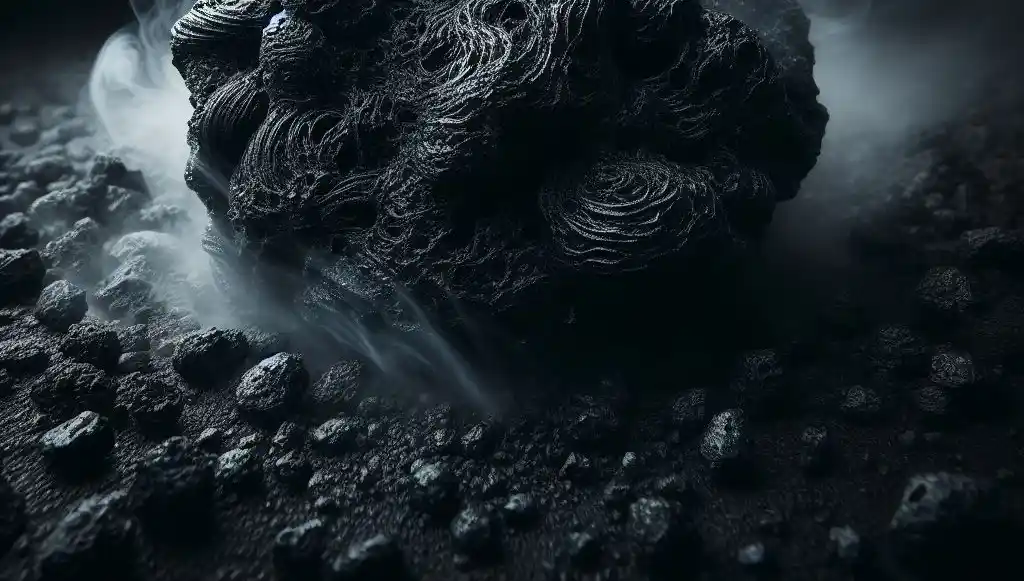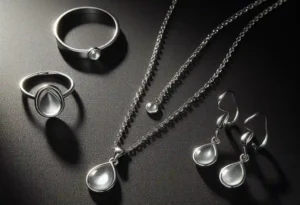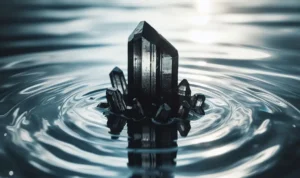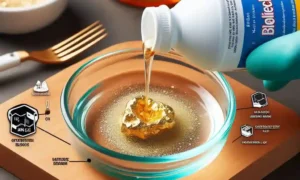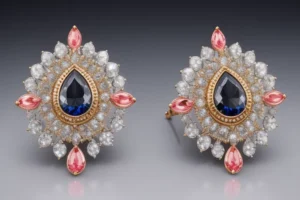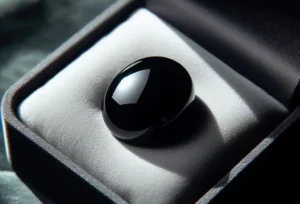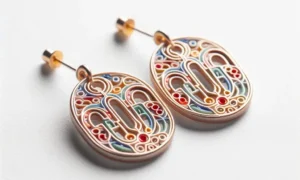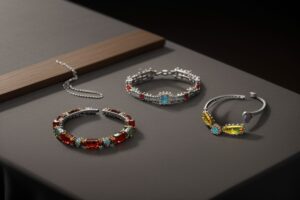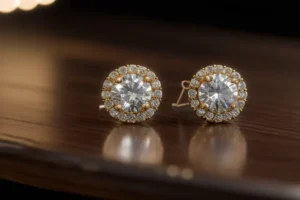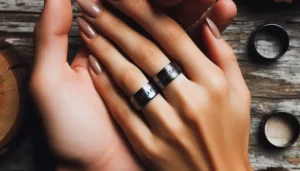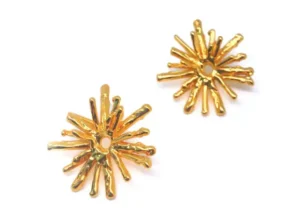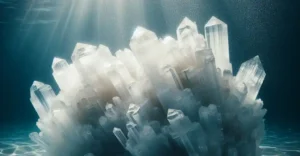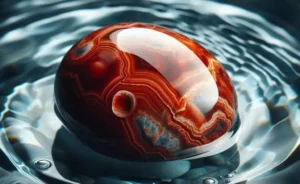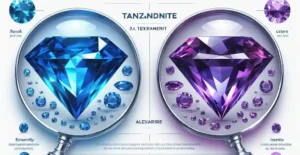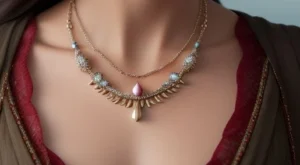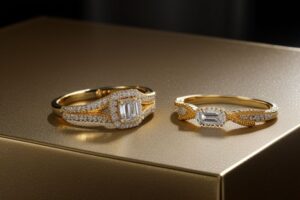How to Tell if Lava Stone is Real? In the realm of natural stones used for jewelry, decoration, and various healing purposes, lava stone holds a unique place. Known for its connection to the earth’s core, lava stone is not just any ordinary stone. Its origin from cooled volcanic lava lends it an array of powerful properties and a distinctive appearance.
However, with the rise in its popularity, the market has seen an influx of imitations that mimic the look but lack the authentic properties of genuine lava stone.
So, how can you ensure that the lava stone you possess or intend to purchase is real? This ultimate checklist will guide you through the crucial steps for identifying authentic lava stone.
How to Tell if Lava Stone is Real?

– Perform the Water Test: Check the stone’s porosity by placing a drop of water on its surface. Genuine lava stone will absorb the water quickly due to its high porosity.
– Assess Texture and Weight: Genuine lava stones are lightweight and have a rough, porous texture. Counterfeits may feel heavier and smoother.
– Examine Color and Uniformity: Look for natural variations in color and slight imperfections. Authentic lava stones often display a range of shades and may include mineral inclusions.
– Test Temperature Retention: Warm the stone slightly and observe how long it retains the heat. Real lava stones, due to their porous nature, will hold onto warmth longer than fakes.
– Beware of Too Good to Be True Offers: Evaluate the price and source. Authentic lava stone is reasonably priced and sourced from reputable vendors. High-quality imitations may come at a lower cost, but genuine lava stone’s value is in its natural origin and unique properties.
– Spot Common Imitations: Note the differences in texture, weight, and temperature between real lava stones and imitations such as dyed plastic beads or other porous rocks.
Understanding the Basics of Lava Stone
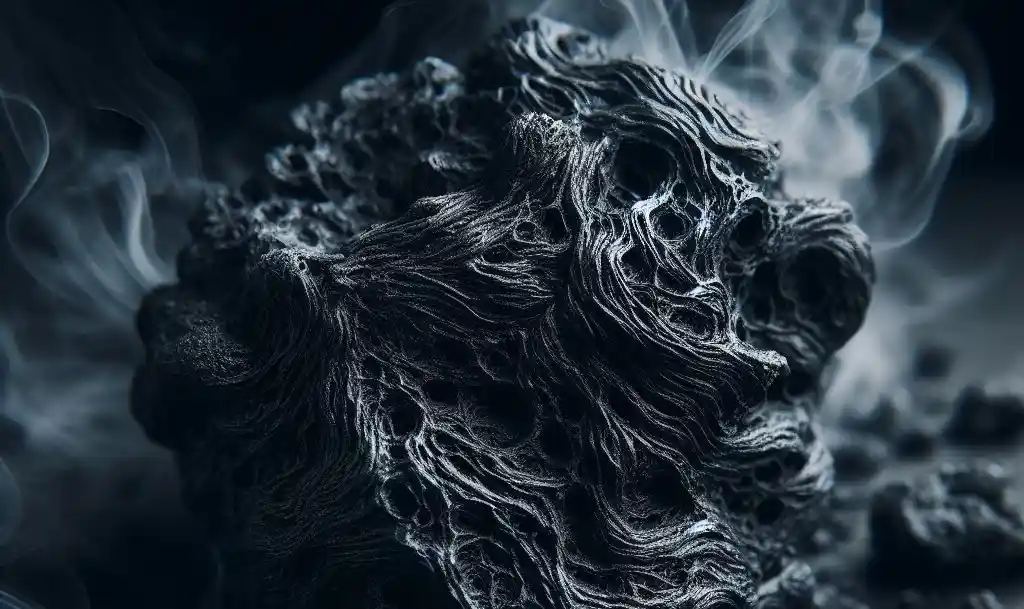
Lava stone, also known to geologists as basalt, is a fascinating product of the earth’s inner workings. It forms through the rapid cooling and solidification of molten lava that reaches the earth’s surface or the ocean floor.
This process imbues the stone with remarkable characteristics, making it not just a piece of the earth’s crust but a symbol of transformation and rebirth. The stone’s origin from the fiery heart of a volcano ties it to themes of endurance and resilience, qualities that many believe it can impart to its bearer.
In addition to its physical and metaphysical properties, lava stone’s geological backstory connects us to the planet’s dynamic processes. Its formation, tied to both constructive and destructive earth forces, reminds us of the continual changes shaping the world we inhabit.
This deeper understanding of lava stone’s origins and its journey from molten lava to a solid state adds layers of appreciation for its role in jewelry, healing practices, and decorative arts, beyond its mere physical appearance.
The Importance of Texture and Weight in Determination
When assessing a lava stone’s authenticity, its texture and weight play pivotal roles. The genuine article is characterized by its remarkably lightweight nature, a direct result of the numerous air bubbles that become trapped within the stone as it cools from its molten state.
This feature not only makes it lighter than most would expect but also contributes to its unique, rough texture. Unlike imitations, which may attempt to mimic this appearance but often feel heavier and smoother to the touch, an authentic lava stone provides a tactile experience that speaks to its volcanic origin.
The porous surface of a real lava stone should be immediately noticeable upon handling, distinguishing it from smoother, denser materials used in counterfeits.
This examination of texture and weight is a fundamental step in verifying the stone’s authenticity, offering tangible evidence of its natural heritage and formation process.
Conducting the Water Test for Porosity
The water test serves as a straightforward yet telling method to verify a lava stone’s genuineness. Real lava stone is characterized by its remarkable porosity, a feature that can be easily assessed with just a drop of water. To perform this test, gently place a single drop of water onto the surface of the stone.
Watch closely how the stone reacts. If the stone is authentic, you will notice that the drop of water quickly disappears, absorbed into the stone’s porous surface.
This rapid absorption is indicative of genuine lava stone, which naturally has a high porosity due to the air pockets formed during its cooling process.
On the other hand, if the water droplet remains on the surface, barely absorbed or not absorbed at all, this could suggest that the stone in question is not a genuine lava stone but possibly an imitation.
This simple test is a practical step that anyone can perform to help discern the real from the faux, leveraging one of lava stone’s inherent natural properties.
Examining Color and Uniformity for Authenticity
The spectrum of colors found in lava stones, while generally leaning towards darker shades, is broader than commonly perceived. Authentic lava stones exhibit a variety of hues, including but not limited to, deep blacks, rich browns, and even reddish tones.
What sets genuine lava stones apart in terms of color is the presence of natural variations and nuances within a single stone. These can manifest as slight differences in shade or the inclusion of minerals that alter the stone’s appearance.
This contrast sharply with imitations, which tend to showcase a homogeneous color distribution, lacking the subtle, organic shifts characteristic of natural stones. Another key indicator of a genuine lava stone is the presence of mineral inclusions.
These natural occurrences contribute to the stone’s unique appearance and further affirm its authenticity. It’s these irregularities and variations that attest to the stone’s volcanic origin, distinguishing it from mass-produced counterparts that cannot replicate such complexity.
The Significance of Temperature Retention in Lava Stones
One of the lesser-known yet fascinating properties of genuine lava stone is its capacity to retain heat. This characteristic stems from its volcanic origin and the unique thermal properties it inherits during its formation.
To test this feature, gently warm the stone by holding it in your hand or placing it under warm water for a few moments.
Once warmed, assess how effectively it holds this temperature. Authentic lava stones will demonstrate a noticeable ability to retain warmth for an extended period.
This is due to the porous nature of the stone, which not only makes it lightweight but also allows it to hold onto heat. In contrast, counterfeit stones, lacking this porous structure, will cool down much quicker.
This temperature retention test provides another dimension to understanding and appreciating the natural qualities of lava stone, offering a tangible connection to its fiery origins beneath the earth’s crust.
Seeking Professional Verification for Your Lava Stone
In cases where personal assessments leave room for doubt, reaching out to a professional for verification of your lava stone’s authenticity is a prudent choice. This involves consulting with individuals who have a depth of knowledge and access to tools that can provide conclusive evidence regarding the stone’s origin and properties.
Specialists such as certified gemologists or reputable jewelers have the expertise to examine the microscopic details of the stone, distinguishing genuine lava stone from clever imitations.
They may use specific tests, including spectroscopy or microscopic examination, to analyze the stone’s composition and structure, which are indicative of its volcanic origin.
Engaging a professional not only offers peace of mind but also ensures that the value and authenticity of your lava stone are thoroughly validated. This step is particularly recommended for pieces of significant financial or sentimental value, where the certainty of authenticity is paramount.
Understanding the Price Point and Source of Your Lava Stone
Navigating the market for genuine lava stone requires an understanding of its typical price range and the origins from which it is sourced. While authentic lava stones carry a value reflective of their natural origin and unique properties, they are generally accessible and reasonably priced.
It’s crucial to be wary of offers that seem too good to be true, as significantly low prices may indicate counterfeit products.
Conversely, exorbitant prices do not guarantee authenticity and may simply be overpriced. Conducting thorough research into the average cost of lava stones can serve as a safeguard against falling into such pricing traps.
Equally important is the provenance of the lava stone. Purchasing from reputable sources, such as established jewelry stores or certified online retailers, significantly increases the likelihood of obtaining an authentic piece.
These vendors often have direct connections to reliable suppliers or mines, ensuring the traceability and authenticity of their stones. Engaging with sellers who are transparent about the origin of their lava stones and who provide detailed information about their sourcing practices can offer additional reassurance of the stone’s authenticity.
This diligence in understanding both the price point and source of your lava stone is a vital step in making an informed and confident purchase.
Awareness of Common Imitations and How to Spot Them
Navigating the market for lava stone jewelry and decorative pieces can sometimes lead you to encounter imitations designed to mimic the authentic stone’s appearance. These counterfeits often come in the form of dyed or painted plastic beads, which, at a glance, may resemble the porous texture of genuine lava stone.
Another common trick is the use of cheaper, more readily available porous rocks, which are then passed off as the real deal. However, a discerning eye can spot these fakes by paying attention to a few key differences.
For instance, plastic imitations typically have a uniform texture and color that lacks the natural variations seen in real lava stone.
They might also feel warmer to the touch initially, as plastic does not have the same heat retention properties. On the other hand, other porous stones masquerading as lava stone may mimic the texture somewhat convincingly but fail the water absorption test due to differing porosity levels.
Keeping these distinctions in mind will aid in distinguishing genuine lava stone from common imitations, ensuring you get the quality and authenticity you seek.
FAQs
Q: How can I quickly tell if my lava stone is real?
A: A quick test is the water test. Place a drop of water on the stone; if it absorbs quickly, it’s likely real due to the high porosity of genuine lava stones.
Q: Can I perform the heat retention test at home?
A: Yes, you can gently warm the stone in your hand or under warm water and then see how long it retains the warmth. Genuine lava stones will hold heat noticeably longer due to their porous nature.
Q: Are all genuine lava stones black?
A: No, while many are dark, genuine lava stones can vary in color, including browns and reddish tones, due to natural variations and mineral inclusions.
Q: How does the texture of a real lava stone feel?
A: It should feel lightweight and have a rough, porous texture, distinguishing it from smoother, denser counterfeit materials.
Q: Is it worth getting my lava stone professionally verified?
A: For pieces of significant value, either financially or sentimentally, professional verification can provide peace of mind and ensure authenticity.
Q: Can the price indicate the authenticity of a lava stone?
A: While price alone isn’t a definitive indicator, very low prices may suggest a counterfeit, and extremely high prices don’t guarantee authenticity. Knowledge of the typical price range and sourcing from reputable vendors are key.

